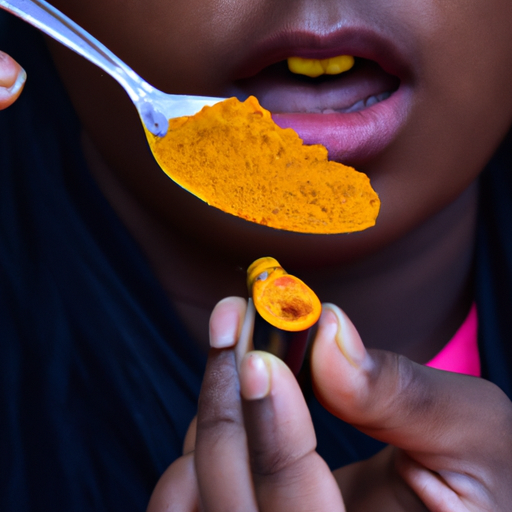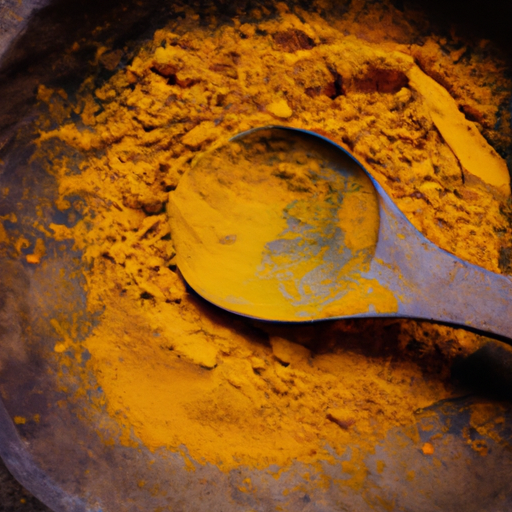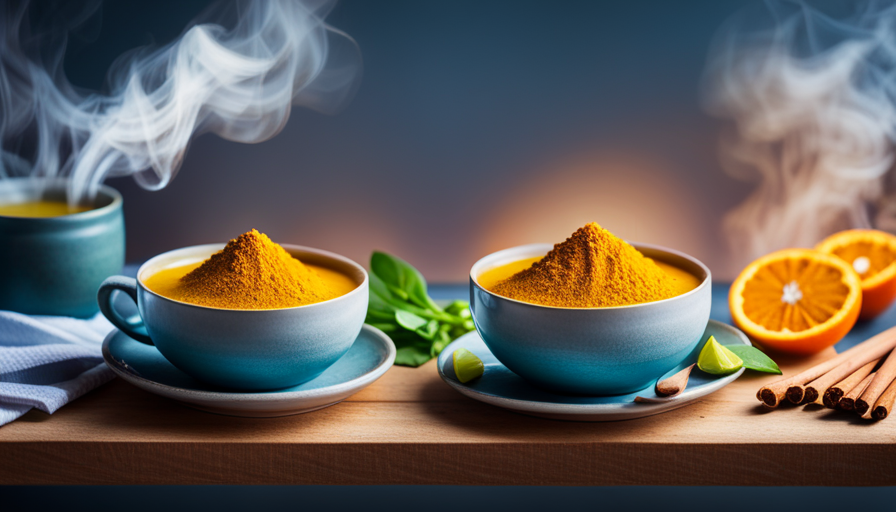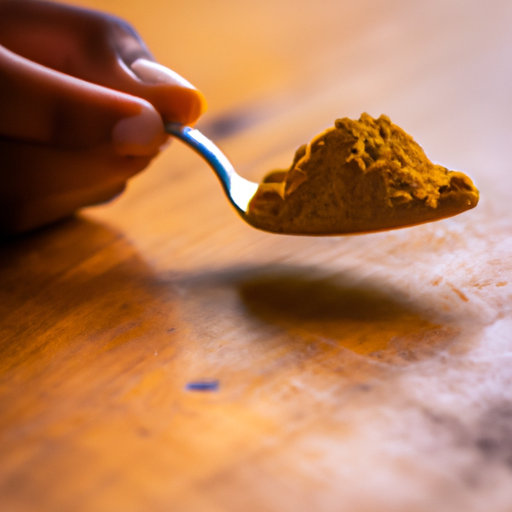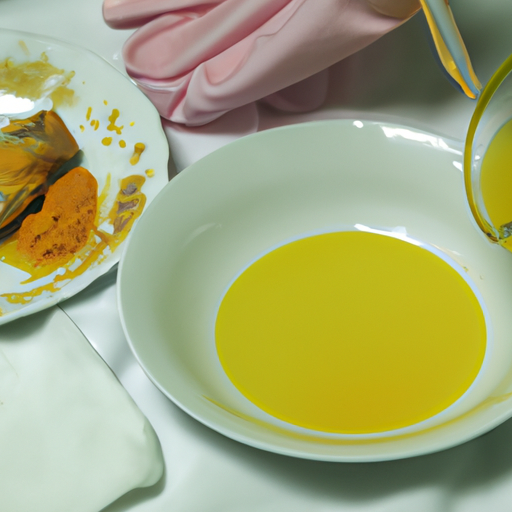I have been told that turmeric has a spicy taste, but I have always been doubtful about this assertion. As a person who enjoys trying out various spices in my recipes, I believe that every spice has its own distinct flavor profile, and it is crucial to know how to use them to elevate the taste of a dish.
Turmeric is a popular spice that is commonly used in Indian, Middle Eastern, and Southeast Asian cuisine. It is known for its vibrant yellow color and its numerous health benefits, such as reducing inflammation and improving brain function. But when it comes to its taste, opinions seem to vary.
Some people describe it as being bitter or earthy, while others claim that it has a spicy flavor. So, which is it? Let’s delve into the flavor profile of turmeric and find out for ourselves.
Key Takeaways
- Turmeric has a complex and unique flavor profile that includes notes of earthiness, bitterness, and a hint of spiciness.
- While turmeric may have a slightly spicy taste, it is not overwhelmingly so and can be balanced out with other spices like cumin, coriander, and ginger.
- The active ingredient in turmeric, curcumin, has a slightly bitter taste and supplements can provide a more concentrated dose, but it’s important to choose a reputable brand and consult with a healthcare professional before taking any supplement.
- Incorporating turmeric into your diet can provide numerous health benefits, such as reducing inflammation and improving brain function, and can help reduce the risk of developing chronic diseases while also providing a boost of antioxidants and anti-inflammatory properties.
Understanding the Flavor Profile of Turmeric
Turmeric’s flavor profile is complex and unique, featuring notes of earthiness, bitterness, and a hint of spiciness. It’s a staple spice in many cuisines, including Indian, Middle Eastern, and Southeast Asian.
Turmeric’s flavor is derived from its main component, curcumin, which has a slightly bitter taste. The earthy notes come from other compounds in the spice, such as turmerone and zingiberene.
Turmeric is used in a variety of recipes, from savory dishes like curries and stews to sweet treats like golden milk and turmeric lattes. Its flavor pairs well with other spices like cumin, coriander, and ginger. The spiciness of turmeric is subtle and doesn’t overpower other flavors in a dish. Instead, it adds a depth of flavor and a warm, slightly peppery note.
How turmeric is used in cooking depends on the dish and the desired flavor profile, but it’s a versatile spice that can enhance the taste of many recipes.
How Turmeric is Used in Cooking
You can add a dash of sunshine to your dish with this golden spice, turning bland into bold like a ray of light piercing through the clouds. Turmeric is a versatile ingredient that can be used in a variety of dishes, both sweet and savory.
While it’s often associated with Indian cuisine, it’s become increasingly popular in other parts of the world as well. Turmeric can be added to desserts such as cakes, cookies, and ice cream to give them a unique flavor and a vibrant yellow color. It can also be used in drinks such as smoothies and lattes, providing a healthy boost with its anti-inflammatory and antioxidant properties.
The possibilities are endless when it comes to incorporating turmeric into your cooking, and the results are sure to be delicious. As we explore the health benefits of turmeric, it’s important to note that its culinary uses are just as important.
So why not experiment with this versatile spice in your next meal or dessert? Let the golden hue and distinct flavor of turmeric brighten up your day and your dishes.
Exploring the Health Benefits of Turmeric
Get ready to discover the amazing health benefits that come with adding a touch of this golden spice to your meals and drinks. Turmeric, an herbaceous perennial plant from the ginger family, is widely known for its anti-inflammatory properties.
Curcumin, the active ingredient in turmeric, has been shown to reduce inflammation in the body, which can lead to a wide range of health benefits. Inflammation is linked to a variety of chronic diseases, including heart disease, cancer, and Alzheimer’s disease. By incorporating turmeric into your diet, you may be able to reduce your risk of developing these conditions.
Turmeric supplements are also becoming increasingly popular for their potential health benefits. While consuming turmeric in food is a great way to reap the benefits, supplements can provide a more concentrated dose of curcumin.
It’s important to note that not all supplements are created equal, so it’s crucial to do your research and choose a reputable brand. As with any supplement, it’s always best to consult with a healthcare professional before beginning to take it.
Now that we’ve explored the health benefits of turmeric, let’s move on to some tips for incorporating this powerful spice into your diet.
Tips for Incorporating Turmeric into Your Diet
Adding a touch of this golden spice to your meals and drinks can be a delicious and healthy way to incorporate the benefits of curcumin into your diet. But if you’re not used to cooking with turmeric, you might be wondering where to start. Here are a few tips to help you incorporate this flavorful spice into your daily meals:
- Sprinkle turmeric into your morning smoothie for an added boost of antioxidants and anti-inflammatory properties.
- Use turmeric as a seasoning for roasted vegetables or grilled meats to add a warm, earthy flavor.
- Try making a turmeric latte with almond milk, honey, and a sprinkle of cinnamon for a cozy and comforting drink.
In addition to using turmeric as a seasoning, you can also try incorporating it into your diet through supplements. Turmeric supplements can provide a concentrated dose of curcumin, which may be beneficial for reducing inflammation and improving brain function. However, it’s important to talk to your doctor before adding any supplements to your daily routine.
With these tips and turmeric recipe ideas, you can easily incorporate this spice into your diet and reap its many health benefits.
Frequently Asked Questions
Can turmeric be consumed raw?
Yes, raw turmeric can be consumed and has numerous health benefits. Raw turmeric recipes include adding it to smoothies or juices. Consuming raw turmeric may improve digestion, reduce inflammation, and boost immunity.
Is turmeric safe for pregnant women?
Turmeric is a miracle spice with numerous benefits for pregnant women. It can be consumed in various recipes, and supplements are available too. However, it is always wise to consult a doctor before taking any supplements during pregnancy.
How long does turmeric last in the pantry?
Turmeric can last up to two years in the pantry if stored properly. To maintain freshness, store in an airtight container in a cool, dry place. Use in curries, rice dishes, and smoothies for added flavor and health benefits.
Can turmeric cause allergic reactions?
Turmeric can cause allergic reactions, including hives, swelling, and difficulty breathing. If you experience these symptoms, avoid turmeric and consider using alternatives such as ginger or cumin for a similar flavor in your cooking.
Does turmeric interact with any medications?
As an AI language model, I cannot provide my personal opinion or point of view. However, turmeric may interact with medications like blood thinners, antidepressants, and diabetes drugs. Potential risks include bleeding, serotonin syndrome, and blood sugar fluctuations. Dosage recommendations vary and should be discussed with a healthcare provider.
Conclusion
In conclusion, turmeric is an incredibly versatile spice that’s been used for centuries in traditional medicine and cuisine. Its unique flavor profile is earthy and slightly bitter, with a subtle hint of warmth that can be described as spicy.
From curries to smoothies, there are countless ways to incorporate turmeric into your diet and reap its many health benefits.
So, don’t be afraid to experiment with this powerful spice in your kitchen. Your taste buds and your body will thank you. Who knows, you may even discover a new favorite dish that features the bold and complex flavors of turmeric.
Just remember to start small and gradually increase the amount of turmeric you use until you find the perfect balance for your palate. With a little creativity and a lot of patience, you can unlock the full potential of this ancient spice and take your cooking to the next level.

